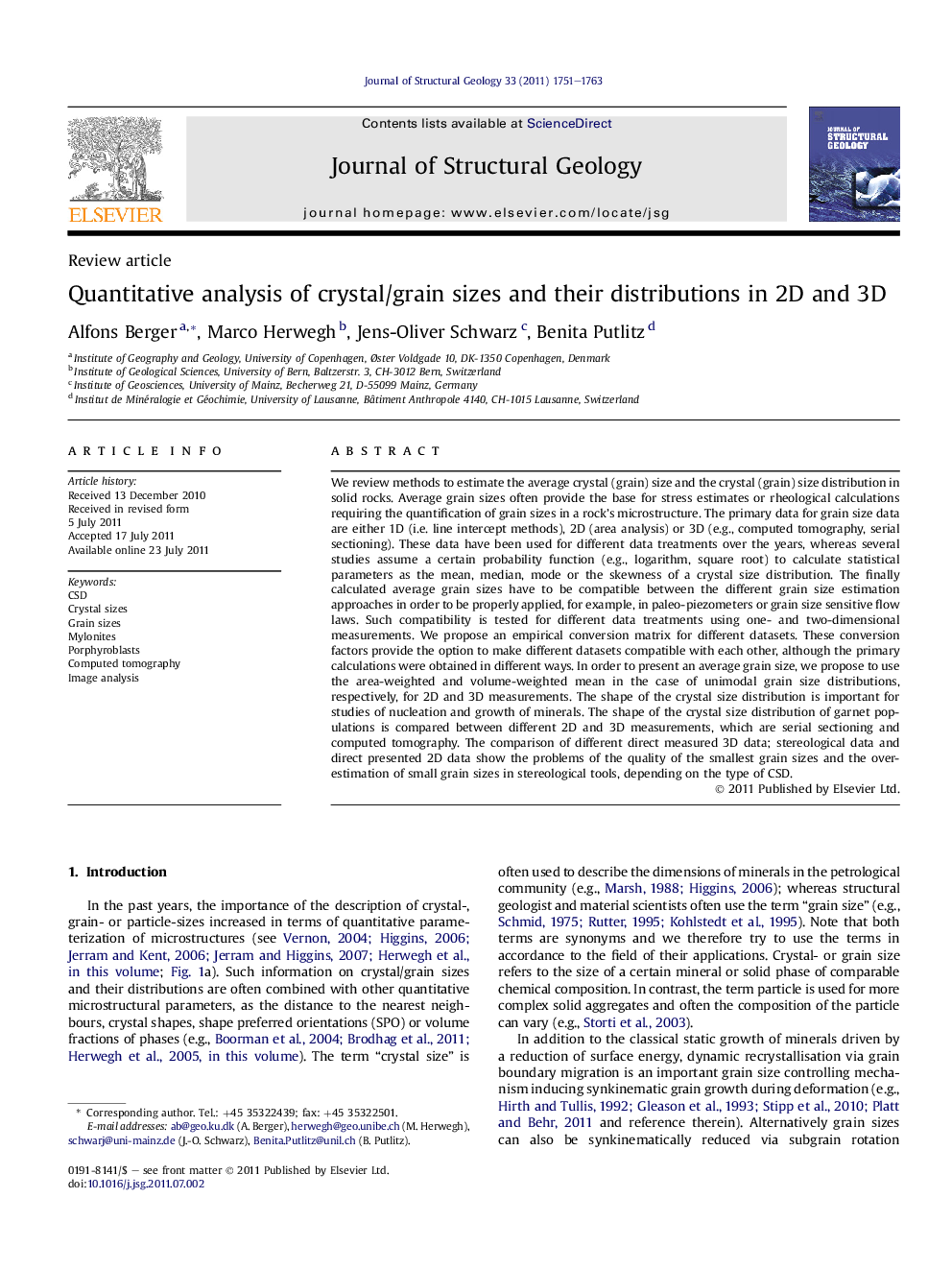| کد مقاله | کد نشریه | سال انتشار | مقاله انگلیسی | نسخه تمام متن |
|---|---|---|---|---|
| 4733429 | 1357024 | 2011 | 13 صفحه PDF | دانلود رایگان |

We review methods to estimate the average crystal (grain) size and the crystal (grain) size distribution in solid rocks. Average grain sizes often provide the base for stress estimates or rheological calculations requiring the quantification of grain sizes in a rock’s microstructure. The primary data for grain size data are either 1D (i.e. line intercept methods), 2D (area analysis) or 3D (e.g., computed tomography, serial sectioning). These data have been used for different data treatments over the years, whereas several studies assume a certain probability function (e.g., logarithm, square root) to calculate statistical parameters as the mean, median, mode or the skewness of a crystal size distribution. The finally calculated average grain sizes have to be compatible between the different grain size estimation approaches in order to be properly applied, for example, in paleo-piezometers or grain size sensitive flow laws. Such compatibility is tested for different data treatments using one- and two-dimensional measurements. We propose an empirical conversion matrix for different datasets. These conversion factors provide the option to make different datasets compatible with each other, although the primary calculations were obtained in different ways. In order to present an average grain size, we propose to use the area-weighted and volume-weighted mean in the case of unimodal grain size distributions, respectively, for 2D and 3D measurements. The shape of the crystal size distribution is important for studies of nucleation and growth of minerals. The shape of the crystal size distribution of garnet populations is compared between different 2D and 3D measurements, which are serial sectioning and computed tomography. The comparison of different direct measured 3D data; stereological data and direct presented 2D data show the problems of the quality of the smallest grain sizes and the overestimation of small grain sizes in stereological tools, depending on the type of CSD.
Journal: Journal of Structural Geology - Volume 33, Issue 12, December 2011, Pages 1751–1763